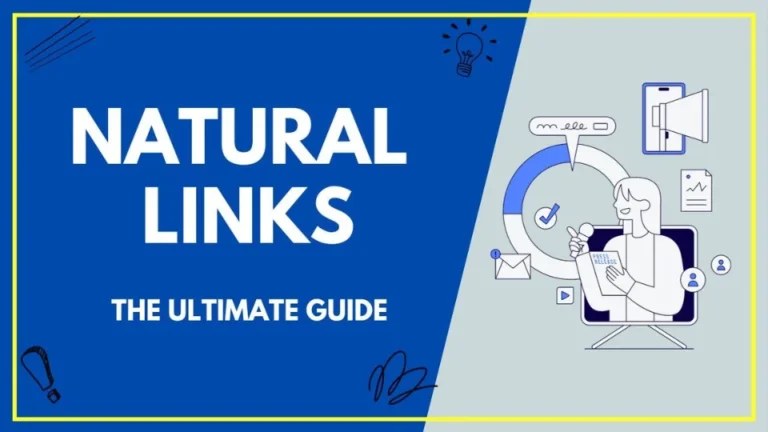How to Get High-Quality Backlinks: 10 Top Strategies That Work in 2025
If you’re serious about boosting your website’s visibility, there’s one thing you can’t ignore—high-quality backlinks. Backlinks (or inbound links) are one of Google’s top ranking factors. But not all backlinks are created equal. A link from a reputable site in your niche carries far more weight than dozens from low-authority blogs.
In this comprehensive guide, you’ll learn how to get high-quality backlinks using 10 proven strategies, plus essential tips, pros and cons, and answers to common SEO questions.
What Are High-Quality Backlinks?
Before diving into the strategies, let’s define what makes a backlink “high quality”:
- Comes from a trusted, authoritative domain
- Is contextually relevant to your content
- Uses natural, non-spammy anchor text
- Is placed organically, not paid or forced
- Drives real traffic from actual users
Google values backlinks that show your site is a trustworthy and valuable resource. That’s why one high-authority link can be more powerful than 100 weak ones.
Why Are Backlinks Important for SEO?

Backlinks are like votes of confidence from other websites. They tell search engines that your content is valuable, credible, and worthy of ranking.
Benefits of high-quality backlinks include:

- Higher rankings on search engines
- Increased referral traffic
- Stronger domain authority
- Faster indexing by search engines
- Improved online visibility and trust
Top 10 Strategies to Get High-Quality Backlinks

1. Create Link-Worthy Content
The foundation of all link-building is valuable content. Without great content, getting backlinks is an uphill battle.
Types of content that attract links:
- In-depth guides and how-tos
- Original research and data reports
- Infographics and visuals
- Case studies and success stories
- Expert roundups and interviews
Make your content so helpful that others want to cite it.
2. Guest Posting on Relevant Sites
Guest posting is still one of the most effective ways to build backlinks and expand your reach.
Tips for success:
- Pitch unique, tailored topics to target blogs
- Focus on niche-relevant websites with good domain authority
- Include a contextual link within the article or author bio
- Avoid spammy or overly promotional content
3. Broken Link Building
This method involves finding broken links on other websites and suggesting your content as a replacement.
Steps to implement:
- Use tools to identify broken links on relevant sites
- Create content that fills the gap
- Reach out and recommend your link as a fix
This adds value for webmasters and earns you a backlink in return.
4. Leverage HARO (Help a Reporter Out)
HARO connects journalists with expert sources. When you provide valuable insights, you can earn backlinks from major publications.
Best practices:
- Respond quickly to relevant queries
- Be concise and to the point
- Highlight your credentials or expertise
- Include a link to your site when allowed
5. Use Skyscraper Technique
This involves finding top-ranking content in your niche and creating something even better—more detailed, updated, or user-friendly.
How it works:
- Find high-performing content
- Create a superior version
- Reach out to sites linking to the original
- Pitch your upgraded content as a better resource
6. Get Featured in Roundups or Expert Lists
Many blogs publish weekly or monthly roundups of useful content. If you have something valuable, pitch it to be included.
Ideas to get featured:
- Submit new content to editors or bloggers
- Engage with roundup creators on social media
- Offer original insights or data they can use
7. Build Relationships With Influencers
Networking with influencers and bloggers in your niche can open doors to organic backlinks.
Relationship-building tips:
- Comment on their posts
- Share their content
- Mention them in your articles
- Offer help or collaboration opportunities
The stronger your relationships, the more natural backlinks you’ll earn.
8. Use Visual Assets (Infographics, Charts, Templates)
Visual content is highly shareable and often cited by other content creators.
Ideas to consider:
- Create unique charts, graphs, or infographics
- Add embed codes for easy sharing
- Reach out to blogs that publish similar topics
Backlinks often come when others reference your visuals in their own content.
9. List Your Site in Trusted Directories
High-quality directories can still offer valuable backlinks—just avoid spammy ones.
Good examples include:
- Industry-specific directories
- Local business directories
- Chamber of commerce or trade groups
Make sure the site is well-moderated and relevant to your niche.
10. Monitor Competitors’ Backlinks
Use SEO tools to see where your competitors are getting links. Then find similar opportunities.
Tools for backlink analysis:
- Ahrefs
- SEMrush
- Ubersuggest
- Moz Link Explorer
This reverse-engineering strategy gives you a shortcut to proven backlink sources.
Comparison Table: Backlink Strategies
| Strategy | Effort Level | Link Quality | Scalability | Best For |
|---|---|---|---|---|
| Guest Posting | Medium | High | Medium | Bloggers and niche websites |
| Broken Link Building | High | High | Medium | SEO-savvy users |
| HARO | Low | Very High | Low | Experts and PR-savvy individuals |
| Skyscraper Technique | High | High | Medium | Content creators and SEOs |
| Visual Content | Medium | Medium-High | High | Designers and marketers |
Pros and Cons of Building High-Quality Backlinks
Pros
- Improves your site’s search engine rankings
- Builds credibility and trust in your niche
- Drives consistent referral traffic
- Long-term SEO value
Cons
- Can be time-consuming
- Requires consistent outreach and effort
- Success is not guaranteed (especially early on)
- Needs regular monitoring for lost or broken links
Frequently Asked Questions (FAQ)
How many backlinks do I need to rank?
There’s no fixed number—it depends on your niche and competition. Focus on quality over quantity. One backlink from a high-authority site can outweigh dozens from low-authority domains.
Are all backlinks good?
No. Links from spammy or irrelevant websites can actually harm your SEO. Always aim for contextually relevant, natural links from reputable sources.
Can I buy backlinks?
Buying links violates Google’s guidelines and can result in penalties. Stick to white-hat strategies that offer lasting SEO value.
How long does it take to see results?
It can take weeks or months. Link-building is a long-term strategy. The earlier you start, the sooner you’ll see consistent gains.
What’s the best tool for backlink tracking?
Some popular tools include Ahrefs, SEMrush, Moz, and Google Search Console. These help you monitor backlink growth, losses, and referring domains.
Final Thoughts: Build Backlinks the Smart Way
High-quality backlinks are essential to any successful SEO strategy. But building them isn’t just about hustling for links—it’s about creating value, making connections, and sharing great content.
Choose the strategies that fit your strengths and goals, and focus on consistent, ethical, white-hat tactics. Over time, you’ll build a strong link profile that boosts your authority, drives traffic, and helps your site climb the rankings.
Ready to grow your SEO presence? Start by implementing 2–3 strategies from this guide and track your results. Backlinks aren’t just links—they’re bridges to better visibility.







